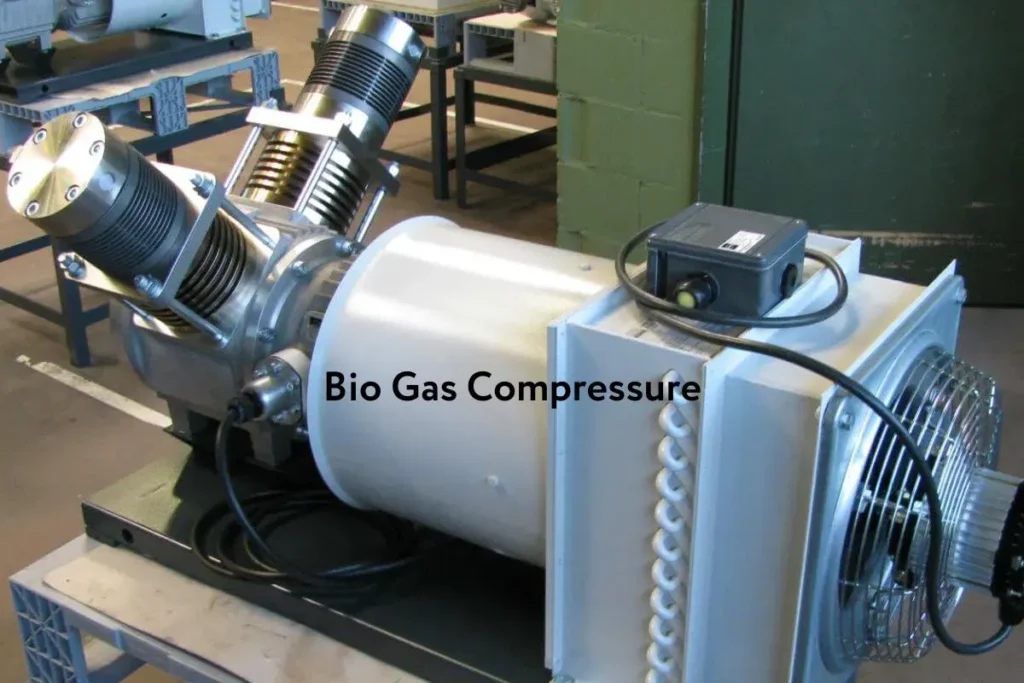Table of Contents
ToggleCompressed Biomethane Gas: Fueling a Greener Future

Amidst our relentless pursuit of clean energy solutions, a potential champion emerges: compressed biomethane gas (CBG). This renewable fuel, derived from organic waste, offers a compelling counterpoint to fossil fuels, promising a greener future powered by nature’s castoffs.
From Waste to Wonder: The Biomethane Production Process
CBG’s journey begins with the humble breakdown of organic matter. Microbes in anaerobic digesters, deprived of oxygen, feast on food scraps, sewage sludge, and agricultural waste, transforming them into a mixture of gases. This biogas, primarily composed of methane and carbon dioxide, holds the potential for energy generation. However, to unleash its full potential, it needs a makeover.
Enter biogas upgrading, a multi-step process that polishes the rough gem into a sparkling jewel. Impurities like carbon dioxide, hydrogen sulfide, and moisture are meticulously removed, leaving behind a methane-rich gas virtually indistinguishable from natural gas. This purified gas, compressed to high pressures for efficient storage and transportation, becomes the coveted CBG.
Benefits Galore: A Boon for Planet and People
CBG’s appeal lies not just in its renewable nature but also in its plethora of benefits:
- Climate Champion:Replacing fossil fuels with CBG slashes greenhouse gas emissions significantly. Studies estimate lifecycle reductions of up to 125% compared to gasoline and 90% compared to diesel. This translates to a powerful weapon in our fight against climate change.
- Waste Warrior:CBG harnesses the power of waste, transforming it from a burden into a valuable resource. This not only reduces landfill waste but also creates a sustainable waste management solution.
- Energy Diversification:CBG diversifies our energy portfolio, reducing dependence on fossil fuels and enhancing energy security. Its compatibility with existing natural gas infrastructure facilitates seamless integration into existing energy networks.
- Economic Engine:CBG production fosters a flourishing bioeconomy, creating jobs in agriculture, waste management, and renewable energy sectors. This revitalizes rural economies and empowers local communities.
Fueling Diverse Needs: Applications of CBG
CBG’s versatility shines in its diverse applications. It can:
- Power Vehicles: From heavy-duty trucks to passenger cars, CBG can fuel clean transportation, significantly reducing emissions in the sector.
- Heat Homes and Businesses: CBG can replace natural gas in boilers and furnaces, providing clean and sustainable heating solutions for homes and businesses.
- Generate Electricity: CBG-powered generators can produce electricity, contributing to a cleaner and more decentralized energy grid.
- Cook Clean: In developing nations, CBG can replace polluting firewood and charcoal for cooking, improving health and reducing deforestation.
A Global Pursuit: CBG Development Around the World
The CBG wave is sweeping across the globe, with several nations actively pursuing its development:
- India: Aiming to be a global leader in CBG, India has launched an ambitious plan to set up 5,000 CBG plants by 2025. Policy support, subsidies, and a focus on waste-to-wealth creation are driving rapid growth.
- United States: With a mature biogas market, the US is increasingly focusing on upgrading biogas to CBG. Government incentives and rising environmental awareness are propelling the sector forward.
- Europe: Pioneering renewable energy solutions, European nations like Germany, Sweden, and the UK are leading the way in CBG adoption. Stringent emission regulations and a strong focus on sustainability are fueling the market.
- Developing nations: CBG offers a promising clean energy solution for developing countries grappling with waste management challenges and energy poverty. Initiatives in countries like Brazil, China, and Ethiopia are paving the way for sustainable development.
Hurdles on the Horizon: Challenges to CBG Adoption
Despite its immense potential, CBG faces its share of challenges:
- High upfront costs: Setting up biogas upgrading facilities requires significant investment, posing a hurdle for small-scale producers.
- Lack of infrastructure: The absence of adequate CBG storage and distribution infrastructure in many regions hampers widespread adoption.
- Policy limitations: Inconsistent or unclear policies and regulations can create uncertainty for investors and hinder market growth.
- Public perception: Awareness about CBG and its benefits needs to be raised to overcome misconceptions and encourage wider acceptance.
Overcoming the Obstacles: Building a Brighter CBG Future
To unlock CBG’s full potential, concerted efforts are needed:
- Financial incentives: Government subsidies, tax breaks, and loan guarantees can make CBG projects more financially viable for investors.
- Infrastructure development: Investing in storage and distribution infrastructure is crucial to create a robust CBG market. This includes building pipelines, storage facilities, and refueling stations for CBG vehicles.
- Streamlined regulations: Clear and consistent policies that simplify the permitting process and establish safety standards are essential to attract investment and ensure responsible CBG production.
- Public awareness: Raising public awareness about the benefits of CBG through education campaigns and demonstration projects can encourage wider adoption and consumer demand.
- Technological advancements: Research and development into new technologies for biogas upgrading and CBG utilization can further improve efficiency and reduce costs.
- International collaboration: Sharing knowledge and best practices between countries can accelerate CBG development and overcome common challenges.
The CBG Revolution: A Sustainable Future Beckons
The journey towards a CBG-powered future is paved with challenges, but the rewards are immense. By addressing the hurdles and harnessing the potential of this clean fuel, we can create a world where waste becomes a resource, emissions are slashed, and communities thrive. The CBG revolution is not just about technology; it’s about a paradigm shift towards a sustainable future powered by nature’s ingenuity. As we embrace this revolution, we embark on a journey towards a cleaner, healthier, and more prosperous planet for generations to come.
Compressed Biomethane Gas (CBG) is a renewable fuel with the potential to revolutionize the energy sector. Its production from organic waste offers a sustainable solution to waste management and climate change. With its diverse applications in transportation, heating, and electricity generation, CBG can contribute significantly to building a cleaner and more secure energy future. Overcoming the challenges through financial incentives, infrastructure development, streamlined regulations, public awareness, and technological advancements is crucial to unlocking CBG’s full potential. As the world embraces the CBG revolution, we pave the way for a greener future powered by nature’s bounty.

While the exact timeline for the global launch remains under wraps, the Brezza (Compressed Biomethane Gas) CBG is undoubtedly a game-changer, setting the stage for a cleaner and more sustainable era in the global automotive landscape.
Launch of CBG Car:
Maruti Suzuki, India’s leading carmaker, is poised to make a global impact with the imminent launch of the Brezza CBG (Compressed Biomethane Gas), a compressed biomethane gas-powered version of its popular compact SUV. This move marks a significant step towards cleaner transportation, not just in India but on a global scale. By offering a fuel-efficient and eco-friendly alternative powered by waste-derived CBG, Maruti Suzuki is catering to the growing demand for sustainable mobility solutions.
The Brezza CBG’s arrival in the global market will be a turning point, challenging the dominance of traditional fossil fuels and paving the way for wider adoption of renewable energy in the automotive sector. Its success could inspire other car manufacturers to follow suit, accelerating the transition towards a greener future for personal transportation. This launch holds immense potential to not only reduce emissions but also empower local communities through waste-to-energy initiatives.